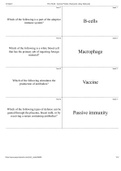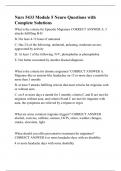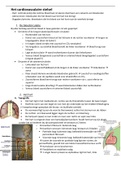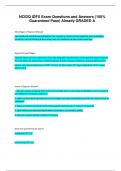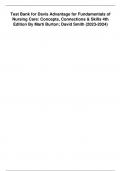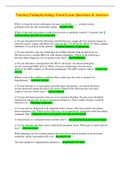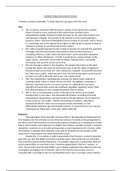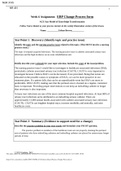Eating Disorders
The Diagnostic and Statistical Manual of Mental Disorders, 5th edition (DSM-5; American Psychiatric
Association [APA], 2013) groups psychiatric disorders associated with eating under “Feeding and Eating
Disorders.” The eating disorders included in this chapter are anorexia nervosa, bulimia nervosa, and binge-
eating disorders. Individuals with anorexia nervosa (AN) have intense irrational beliefs about their shape and
weight. They engage in self-starvation, express intense fear of gaining weight, and have a disturbance in self-
evaluation of weight and its importance (APA, 2013). There are two subtypes of AN: one in which the
individual restricts intake of food and one in which the individual restricts foods but also has periods of binge
eating and purging.
Individuals with bulimia nervosa (BN) engage in repeated episodes of binge eating (consuming large
amounts of calories) followed by inappropriate compensatory behaviors such as self-induced vomiting; misuse
of laxatives, diuretics, other medications; or excessive exercise.
Binge-eating disorder (BED) is diagnosed when individuals engage in repeated episodes of binge
eating followed by significant distress. These individuals do not regularly use the compensatory behaviors seen
in patients with bulimia nervosa, and obesity often results. There are several other less common eating disorders
described in the DSM-5 (APA, 2013).
The most effective treatments involve an interdisciplinary team approach that enlists the expertise of
various health care professionals, including primary care providers, medical specialists, advanced practice
psychiatric nurses, psychologists, psychiatrists, and nutritionists. Family psychoeducation and participation in
treatment can be an important component of effective treatment.
Anorexia Nervosa
Formal assessment tools can be used to help identify those at risk for developing AN and other eating disorders.
The SCOFF questionnaire is an example of a standardized, validated screening tool available to primary care
providers to assess for eating disorders (Schreiner, 2015). Answering yes to two or more questions may indicate
an eating disorder:
• S ick: Do you make yourself sick or vomit after a meal because you feel uncomfortably full?
• C ontrol: Do you fear loss of control over how much you eat?
• O ne stone: Has the patient lost 14 lb in a 3-month period? (A stone is a unit of weight in Great Britain
equivalent to 14 lb.)
• F at: Do you believe you are fat even when others tell you that you are too thin?
• F ood: Does food dominate your life?
Diagnostic symptoms for AN include dangerously low body-weight measurements relative to the age
and gender of the patient, intense fear of gaining weight, and disturbances in how one’s body weight is
experienced. Body mass index (BMI) is a specific measurement used to identify the severity of AN. An ideal
BMI is thought to be between 19 and 25 kg/m2. See the DSM-5 Diagnostic Criteria for Anorexia Nervosa box
for specific BMI ranges. Pediatric growth tables can also be used for children. Other symptoms associated with
low body weight that can suggest a problem include rapid weight loss, dieting or restrictive eating practices, or
family reports of changes in eating behaviors. Physical signs associated with low body weight suggestive of AN
may include the following:
• Malnutrition, including poor circulation, dizziness, palpitations, fainting, or pallor
• Menstrual or other endocrine disturbances
• Unexplained gastrointestinal symptoms (NICE, 2017)
• Cachectic appearance (severely underweight with muscle wasting)
• Lanugo (a growth of fine, downy hair on the face and back)
, Assessment Guidelines
Anorexia Nervosa
1. Safety is the priority concern:
a. Determine if medical or psychiatric condition warrants hospitalization (see Box 14.3).
b. Determine if there are additional medical complications.
c. Determine if there are additional psychiatric comorbidities, especially suicidal ideation and risk for
self-harm.
2. Assess the patient’s level of insight about the disordered eating and feelings regarding weight.
3. Assess the patient’s and family’s understanding about the disease, the therapeutic goals, and the treatment
plan.
Acute Care
Following physiologic stability, the patient is usually transferred to a behavioral health unit or a specialized unit
for those with eating disorders. An interdisciplinary treatment approach is used that incorporates nutritional,
medical, and psychosocial components.
Weight monitoring, monitoring eating patterns, and weight restoration are part of intervention strategies
that can be implemented using a behavioral approach. Nursing interventions may include the following:
• Weigh the patient regularly or daily at the same time of day (before breakfast), in the same attire (e.g.,
a hospital gown), after voiding. Care must be given to prevent water loading by the patient or
other measures to “cheat” during a weigh-in.
• Rationale: Weight restoration is an objective measure of meeting treatment goals.
• Observe or sit with the patient while eating.
• Rationale: To prevent hoarding or inappropriate disposing of food.
• The choice of foods will be made in consultation with a nutritionist.
• Rationale: To prevent odd/unhealthy eating behaviors.
• The patient is given a limited time to complete a meal (e.g., 30 minutes).
• Rationale: To model “normal” eating and prevent procrastination as a way to not eat.
• Continue supervision of the patient after eating (1 to 3 hours).
• Rationale: To prevent vomiting after the meal.
• Some programs base unit privileges on weight gain. Privileges, such as attending an occupational
activity or being able to leave the room, are withdrawn if weight is not gained.
• Rationale: Behavioral approach to reward treatment adherence.
• Tube feedings and liquid supplements are sometimes given if weight is lost or a prescribed percentage
of food (e.g., 75%) is not consumed at each meal. These should be administered in a matter-of-fact
manner.
• Rationale: Physiologic safety.
• Excessive exercise and use of laxatives or diuretics should be avoided because these are used to rid the
body of calories.
• Rationale: To prevent expending calories in unhealthy ways.



